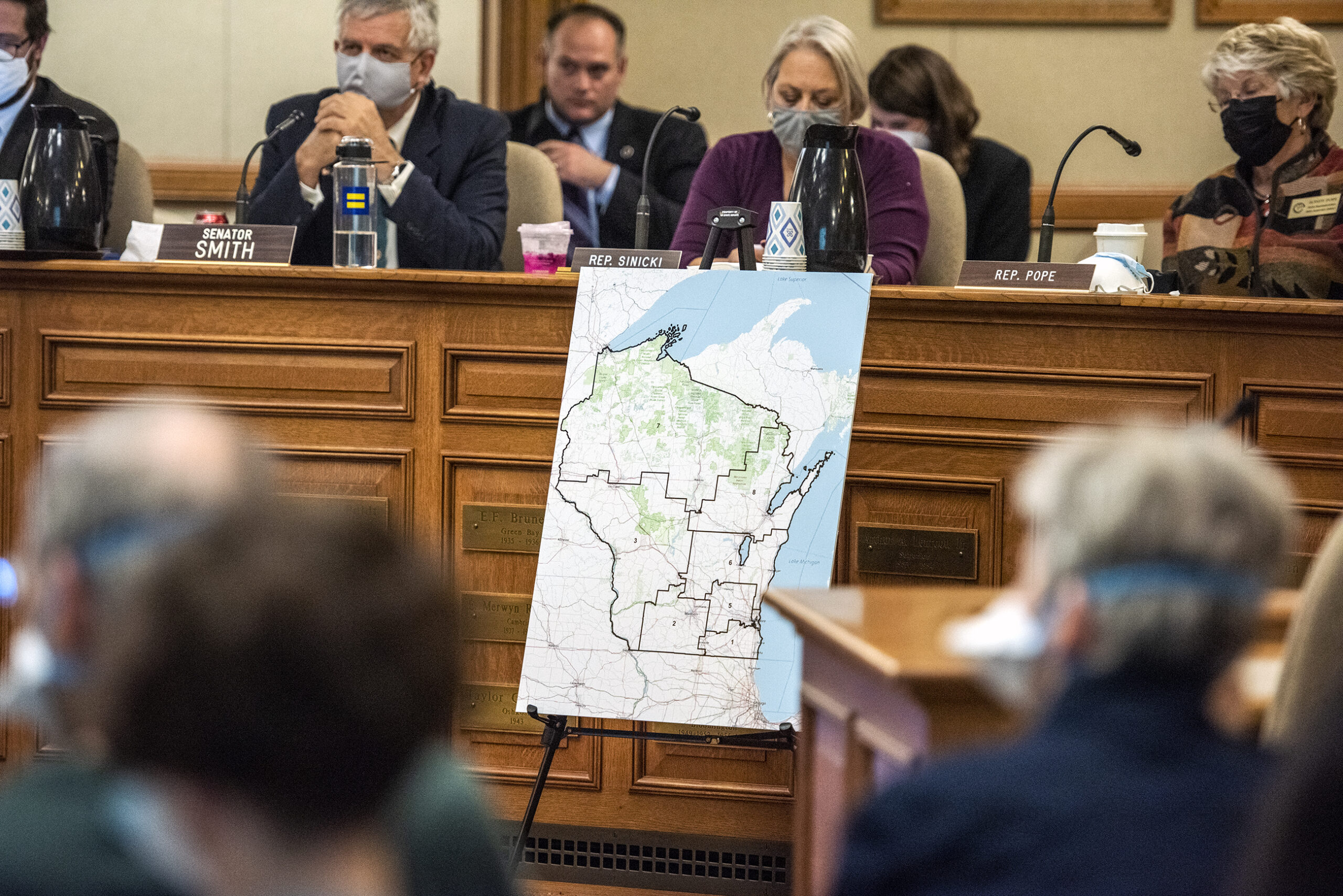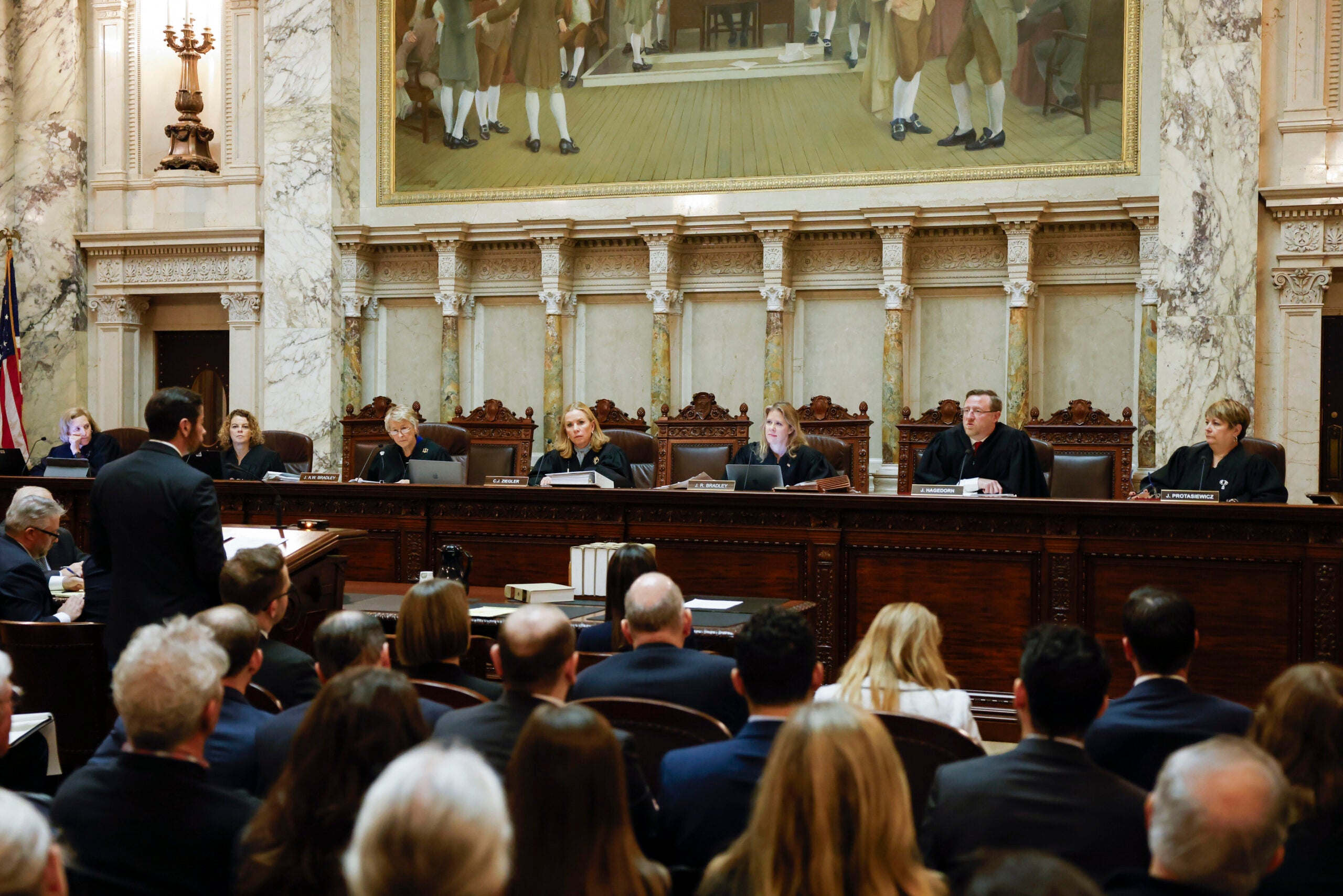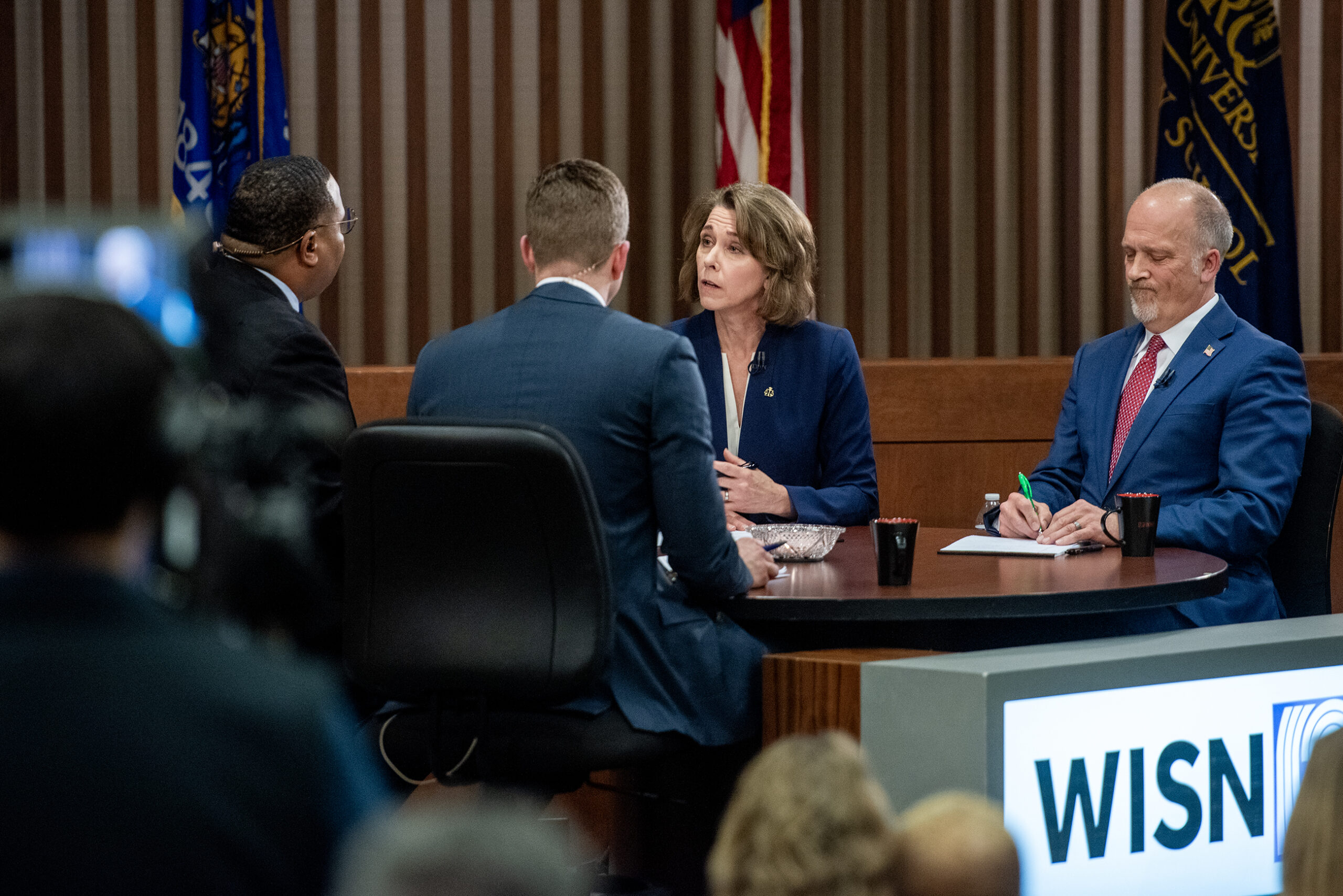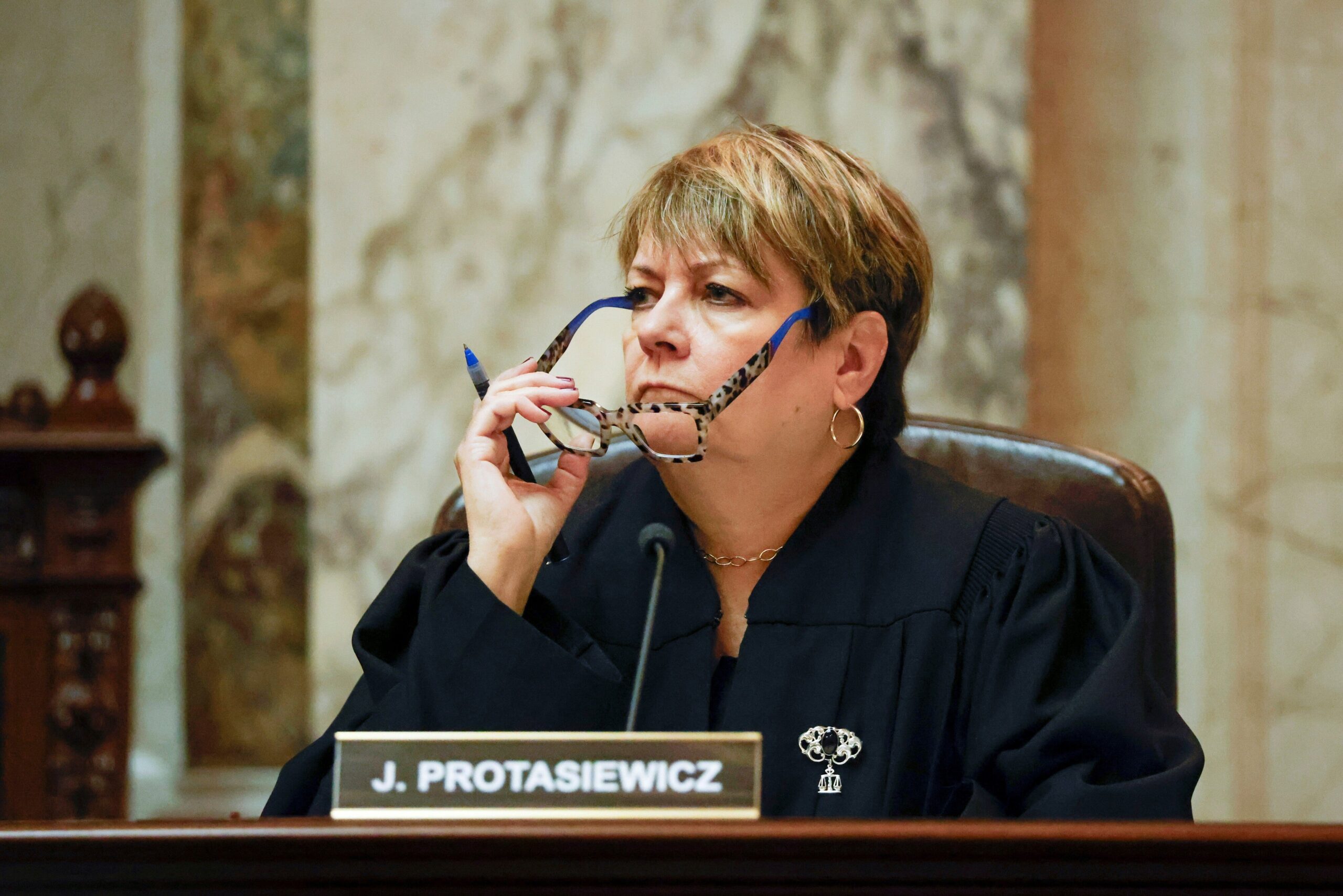Just a day after the Wisconsin Supreme Court chose a redistricting plan submitted by Democratic Gov. Tony Evers, GOP lawmakers asked justices to stay their ruling, saying they plan to appeal the decision to the U.S. Supreme Court.
Justices ruled 4-3 on Thursday that Evers’ congressional and legislative maps best complied with the court’s order that any new districts make the “least changes” possible to the ones Republican lawmakers drew and former Gov. Scott Walker signed in 2011.
Conservative swing justice Brian Hagedorn joined the court’s three liberal justices to cast the deciding vote in the case and authored the majority opinion. Hagedorn said the best way to measure least changes was by looking at “core retention,” or which map moved the fewest people into new districts. By that metric, he said Evers’ “easily scores highest” of all the Congressional maps. Among Assembly maps, Hagedorn said, “no other proposal comes close.”
Stay informed on the latest news
Sign up for WPR’s email newsletter.
Hagedorn also endorsed Evers’ proposal to draw a seventh Black majority Assembly district in Milwaukee, saying there are “good reasons to believe” it was needed to satisfy the federal Voting Rights Act.
But in its motion filed Friday, attorneys for the Legislature argued that Evers’ map violated the Voting Rights Act, and constitutes an unconstitutional racial gerrymander.
“Ordering seven such districts instead of the existing six, because the parties showed it was ‘possible’ that they could be drawn, is no basis at all,” attorneys for Republicans told the court.
In the dissent to Thursday’s ruling, two of the court’s conservative justices, Chief Justice Annette Ziegler and Justice Patience Roggensack, encouraged an appeal to the U.S. Supreme Court.
Attorneys for the Legislature say they plan to file their appeal Monday and expect an indication within two to three weeks as to whether the U.S. Supreme Court will take the case.
The Wisconsin Elections Commission originally said it needed to have new maps in place by March 1 in order to begin preparing for the 2022 elections, but additional, more pressing deadlines are on the horizon.
On April 15, candidates are scheduled to begin circulating nominating petitions to get on the ballot for this year’s partisan primary elections. New maps need to be in place by then so they know which districts they’re running in.
For more on the history of redistricting in Wisconsin and how it impacts political power in the state, check out WPR’s investigative podcast series, “Mapped Out.”
Wisconsin Public Radio, © Copyright 2025, Board of Regents of the University of Wisconsin System and Wisconsin Educational Communications Board.





